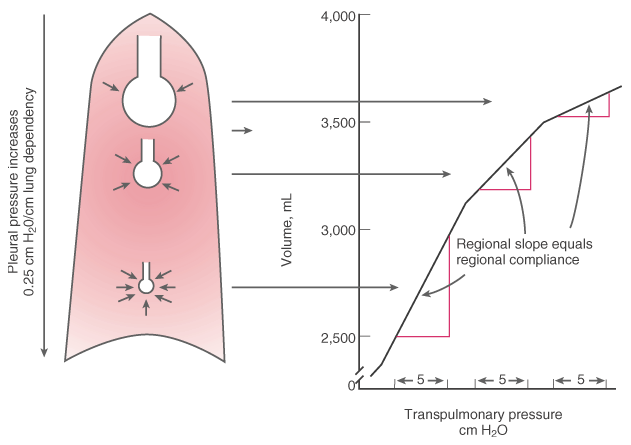Figure 17-3
Pleural pressure increases by 0.25 cm H2
O
every centimeter down the lung. The increase in pleural pressure causes a fourfold
decrease in alveolar volume from the top of the lung to the bottom. The caliber
of the air passages also decreases as lung volume decreases. When regional alveolar
volume is translated over to a regional transpulmonary pressure-alveolar volume curve,
small alveoli are on a steep (large slope) portion of the curve, and large alveoli
are on a flat (small slope) portion of the curve. Because the regional slope equals
regional compliance, the dependent small alveoli normally receive the largest share
of the tidal volume. Over the normal tidal volume range (lung volume increases by
500 mL from 2500 mL [normal functional residual capacity] to 3000 mL), the pressure-volume
relationship is linear. The lung volume values in this diagram are derived from
the upright position.

